Better than Christmas cake: fabulous festive dessert recipes
Alternative Christmas desserts from the Wallpaper* recipe archive, from canelés to cassata and coffee & walnut cake
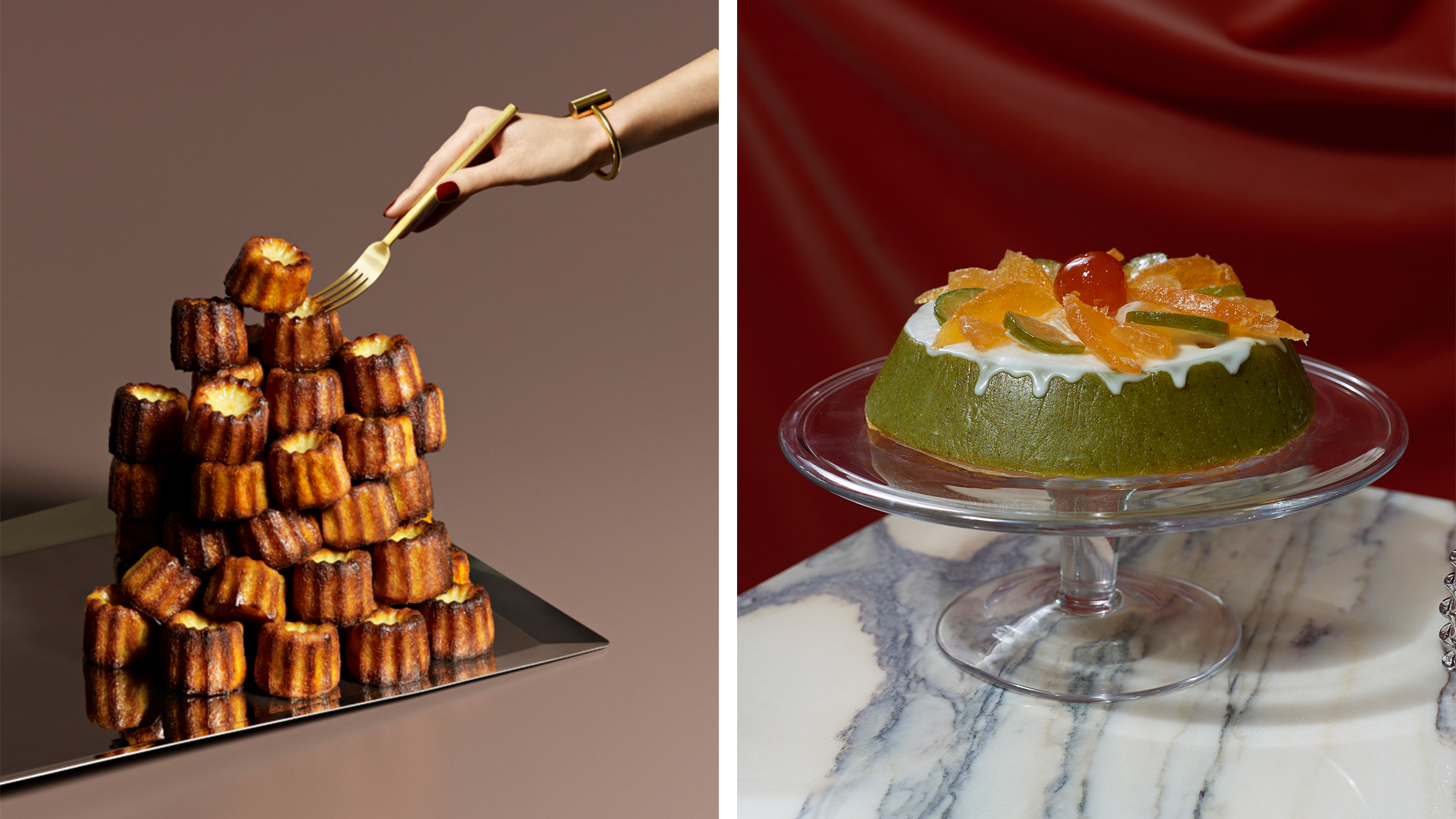
We're embracing Christmas cake in the very broadest of terms. For Christmas desserts with a difference – from fabulous French canelés to sublime Sicilian cassata and perky Portuguese pastéis de nata, via trusty coffee and walnut cake – we've raided the recipe archive of Wallpaper’s esteemed entertaining director, Melina Keays. Having devised the delicious, the daring and the downright divine for Wallpaper* photography shoots since the magazine launched, Keays knows a thing or two about cake. Here are the recipes for a few celebratory sweet treats she prepared earlier. Dig in…
CHRISTMAS DESSERTS AND FESTIVE TREATS
Cassata
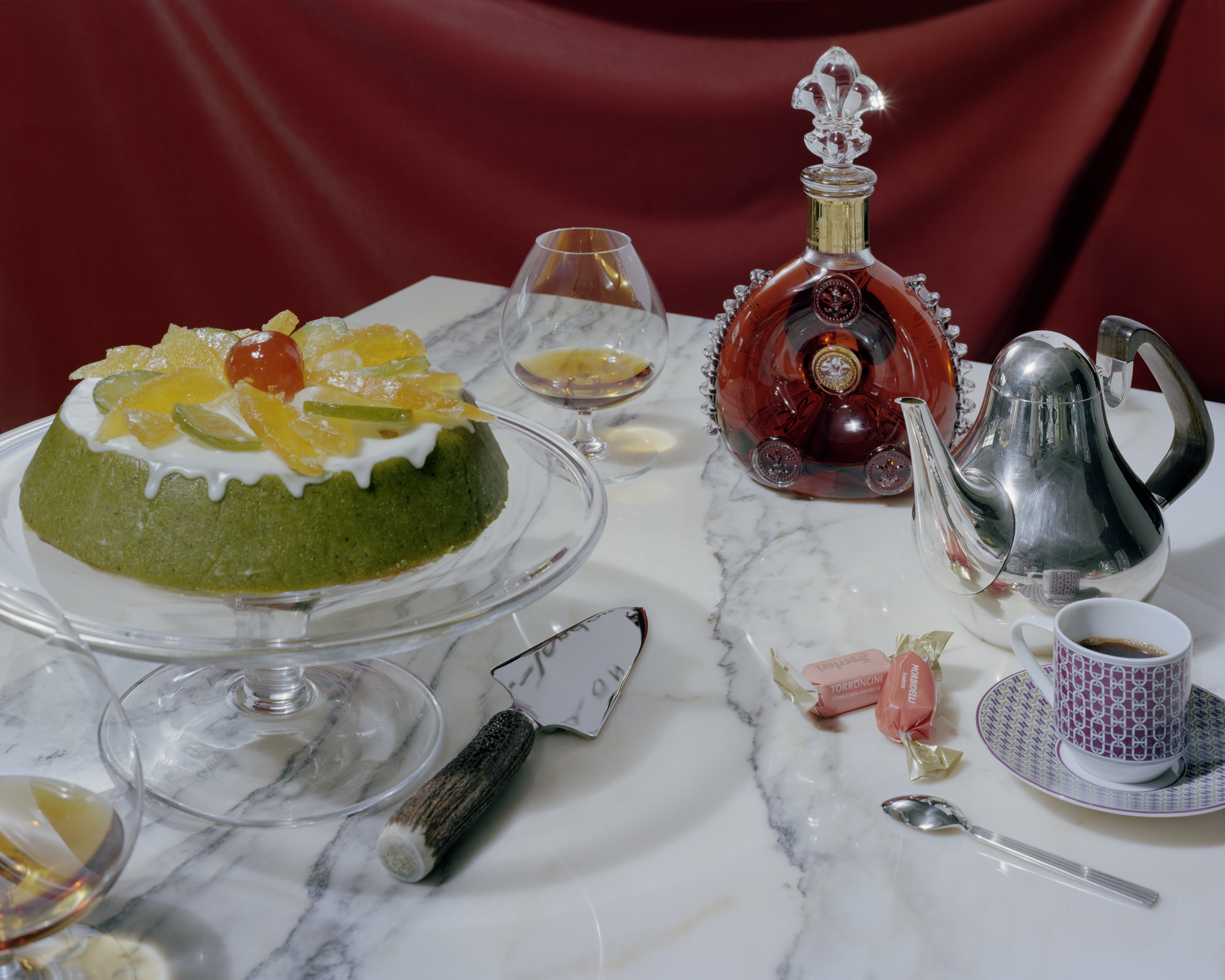
From the December 2018 issue of Wallpaper*. Entertaining Director: Melina Keays. Interiors: Olly Mason
Cassata recipe, serves 10-12
For the marzipan:
- 80g shelled pistachio nuts
- 80g blanched almonds
- 80g icing sugar
- few drops of green food colouring
- 1 egg white, lightly beaten until frothy (reserve the yolk for the sponge cake)
For the sponge cake:
- 170g plain flour
- 1 ½ tsp baking powder
- ¼ tsp salt
- 5 eggs
- 170g caster sugar
- zest of 1 orange
For the filling and syrup:
- 150g caster sugar
- 700g fresh ricotta cheese
- 1 tsp vanilla extract
- ½ tsp ground cinnamon
- 70g dark chocolate, chopped
- 70g candied fruit, chopped
- 2 tbs Grand Marnier
To finish:
- 200g icing sugar
- 1-2 tbs lemon juice
- glacé fruits
To make the marzipan, place the pistachios and almonds in a food processor and chop finely. Add the icing sugar and process well. With the motor running, add the food colouring and enough of the egg white to just bring the mixture to a smooth dough. Wrap and set aside.
Receive our daily digest of inspiration, escapism and design stories from around the world direct to your inbox.
To make the sponge cake, line a 21-24cm springform deep cake tin with baking paper. Heat the oven to 180°C. Put the flour, baking powder and salt into a bowl, mix well, then set aside. Break the five eggs into another bowl., add the reserved yok, the sugar and the orange zest, then beat on high speed for about 5 minutes until pale and fluffy. Fold in the flour mixture and spoon the batter into the prepared tin. Smooth the top, then bake for 30 minutes until well risen and golden, and a toothpick inserted into the centre comes out clean. Allow to cool completely in the tin, then turn out onto a wire rack.
To make the filling, put 100g of the caster sugar in a bowl with the ricotta , vanilla and ground cinnamon and beat well, ensuring the sugar is completely dissolved. Fold in the chocolate and candied fruit, then leave to chill in the fridge.
To make the syrup, put the remaining 50g of caster sugar in a small pan with 30ml water and bring to a simmer over a medium to high heat. Stir until the sugar has dissolved, then remove from the heat, stir in the Grand Marnier and set aside.
Cut the sponge cake into 1cm-thick slices across the diameter. Line a 21-24cm cassata mould, tarte tatin tin or pie dish with sloping sides with clingfilm. Roll out the marzipan on a surface lightly dusted with icing sugar, to about a 1/2m thickness. Slice the marzipan into strips and use these to line the sides of the cassata mould, smoothing and flattening them where they overlap. Line the base and sides of the cassata mould with cake strips, cutting them to fit. Brush the cake surface generously with some of the syrup. Spoon in the ricotta filling and smooth the top. Cover the ricotta filling with more cake slices and brush with the remaining syrup. Wrap tightly with clingfilm and chill for 2 hours. Combine the icing sugar with enough lemon juice, added gradually, to make a smooth, thick glaze. Invert the cake onto a serving plate. Pour the glaze over the cake to cover evenly. Decorate with glacé fruits and chill until set, for at least 2 hours, or overnight.
Coffee & walnut cake, and canelés
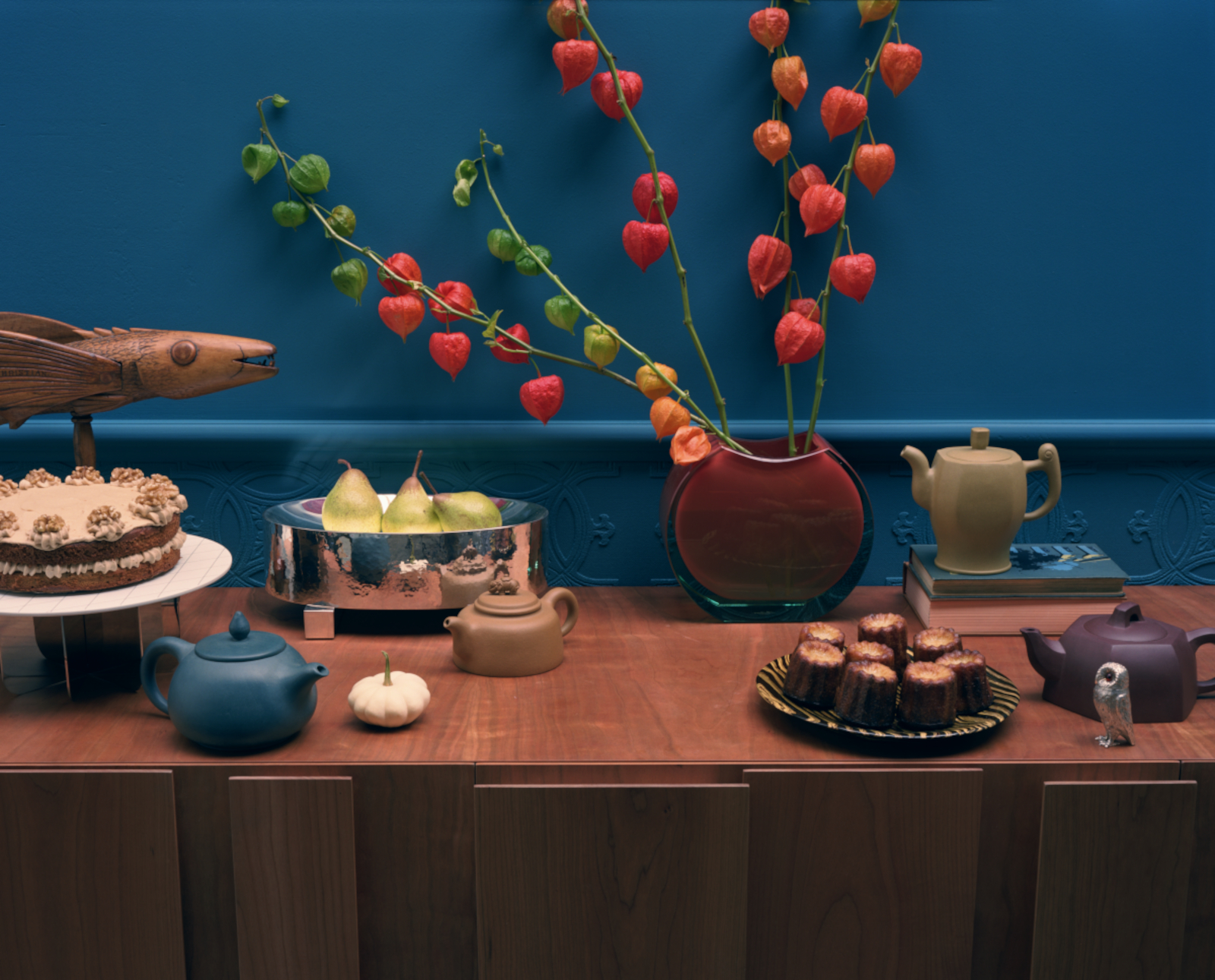
From Wallpaper* December 2013. Entertaining Director: Melina Keays. Interiors: Benjamin Kempton
Coffee & walnut cake recipe
- 180g plain flour
- 1½ tsp baking powder
- ¼ tsp bicarbonate of soda
- ¼ tsp salt
- 180g unsalted butter, softened
- 180g caster sugar
- 3 large eggs
- 1 tbs instant coffee
- 1tbs instant coffee dissolved in 1tbs boiling water
- 2 tbs plain yogurt
- 60g chopped walnuts, plus walnut halves to decorate
- 2-3 tbs milk
For the coffee icing:
- 150g unsalted butter, softened
- 300g icing sugar
- 1 tbs instant coffee dissolved in 1 tbs boiling water
- 2tbs milk
Prepare 220cm shallow round baking tins by lining their bases with baking parchment. Preheat the oven to 180°C. Sift the flour with the baking powder, bicarbonate and salt, and set aside. Beat the butter with the sugar in a large bowl until soft and fluffy. Beat in the eggs, one at a time, adding a tablespoon of the reserved flour with each egg to prevent curdling. Add the flour, in two stages, making sure each addition is blended in before adding the next. Beat in the coffee mixture, the yogurt, the chopped walnuts, and enough of the milk to achieve a soft ‘dropping’ consistency.
Divide the batter between the tins, smooth the tops and place in the preheated oven for 20-25 mins until well risen and golden. A toothpick should come out clean. Allow to cool in the tins for 5 mins, then run a knife between cake and tin to release the cakes. Cool on a wire rack.
To make the icing, beat the butter and sugar together until pale, soft and fluffy. Stir the milk into the coffee and beat one tablespoon into the buttercream. Continue with the rest of the coffee mixture, beating in one tablespoon at a time until you have a light and fluffy icing.
Spread half on one sponge, then place the second on top and spread, or pipe, with the remaining icing. Decorate with walnut halves.
Canelés recipe, makes 16
- 500ml full fat milk
- 1 vanilla pod, split in half lengthways, both halves still attached at the stalk
- 30g unsalted butter, plus another 30g, melted, to butter the moulds
- 220g caster sugar
- ¼ tsp salt
- 130g plain flour
- 1 egg and 2 egg yolks
- 3 tbs dark rum
- canelé moulds
Make the batter the day before. Put the milk, vanilla pod, butter, sugar and salt into a heavy pan and slowly bring to just below boiling point.
Take off the heat, remove the vanilla, scrape out the seeds and whisk these into the hot milk. Reserve the empty pod. Put the flour into a large bowl and pour on a little of the hot milk, whisking away all the lumps. When the batter is smooth, whisk in the rest of the milk. Beat in the eggs and rum. Put the vanilla pod back into the batter.Cool to room temperature, then cover and refrigerate overnight.
Brush the moulds with melted butter and place in the fridge to chill. Heat the oven to 250°C. Discard the vanilla pod. Fill the moulds just over three quarters full with the cold batter and bake for 10 mins at 250°C, and a further 35 mins at 190°C. Invert the moulds onto a wire rack to release the canelés.
Floating islands, and rum babas
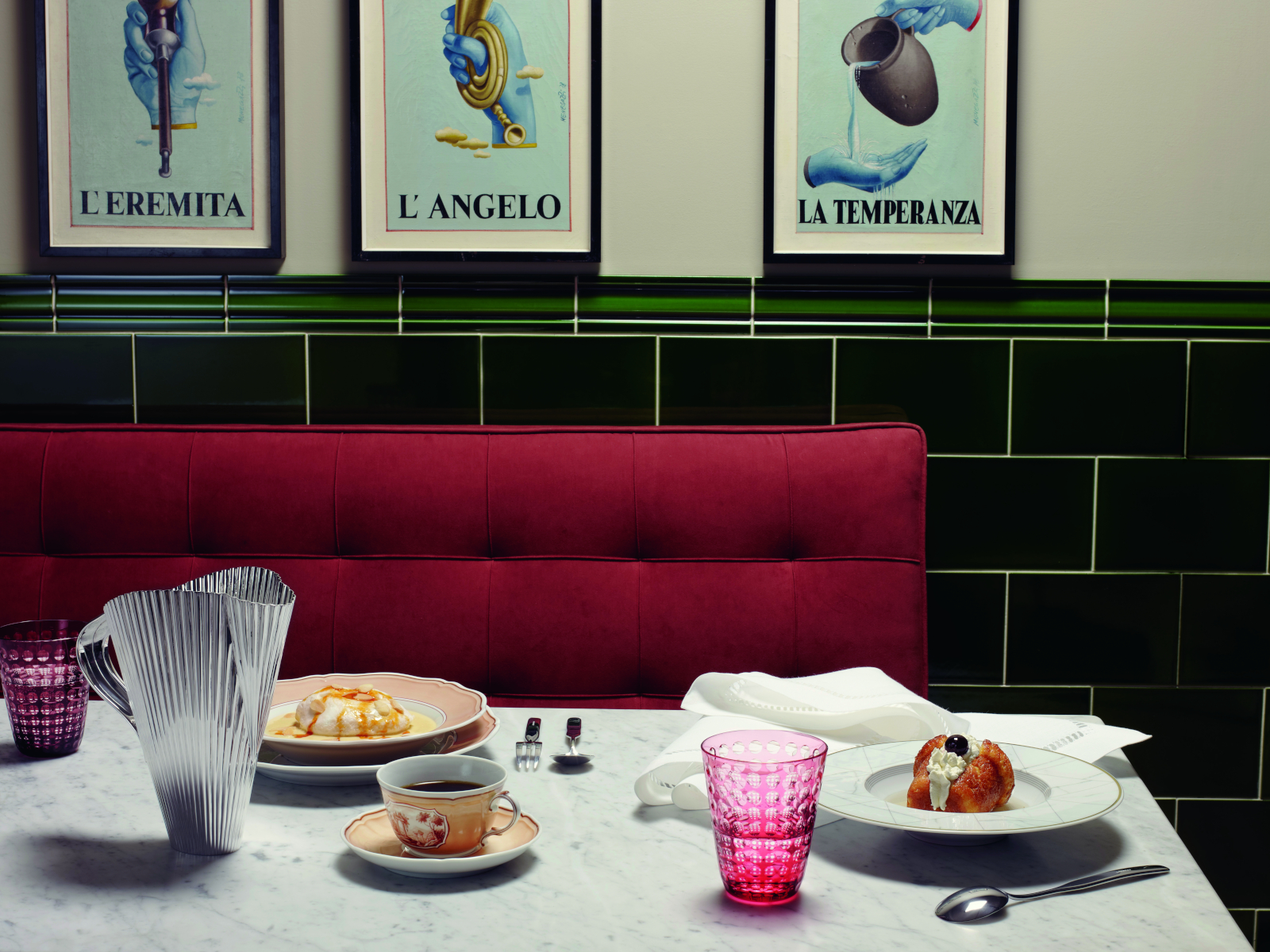
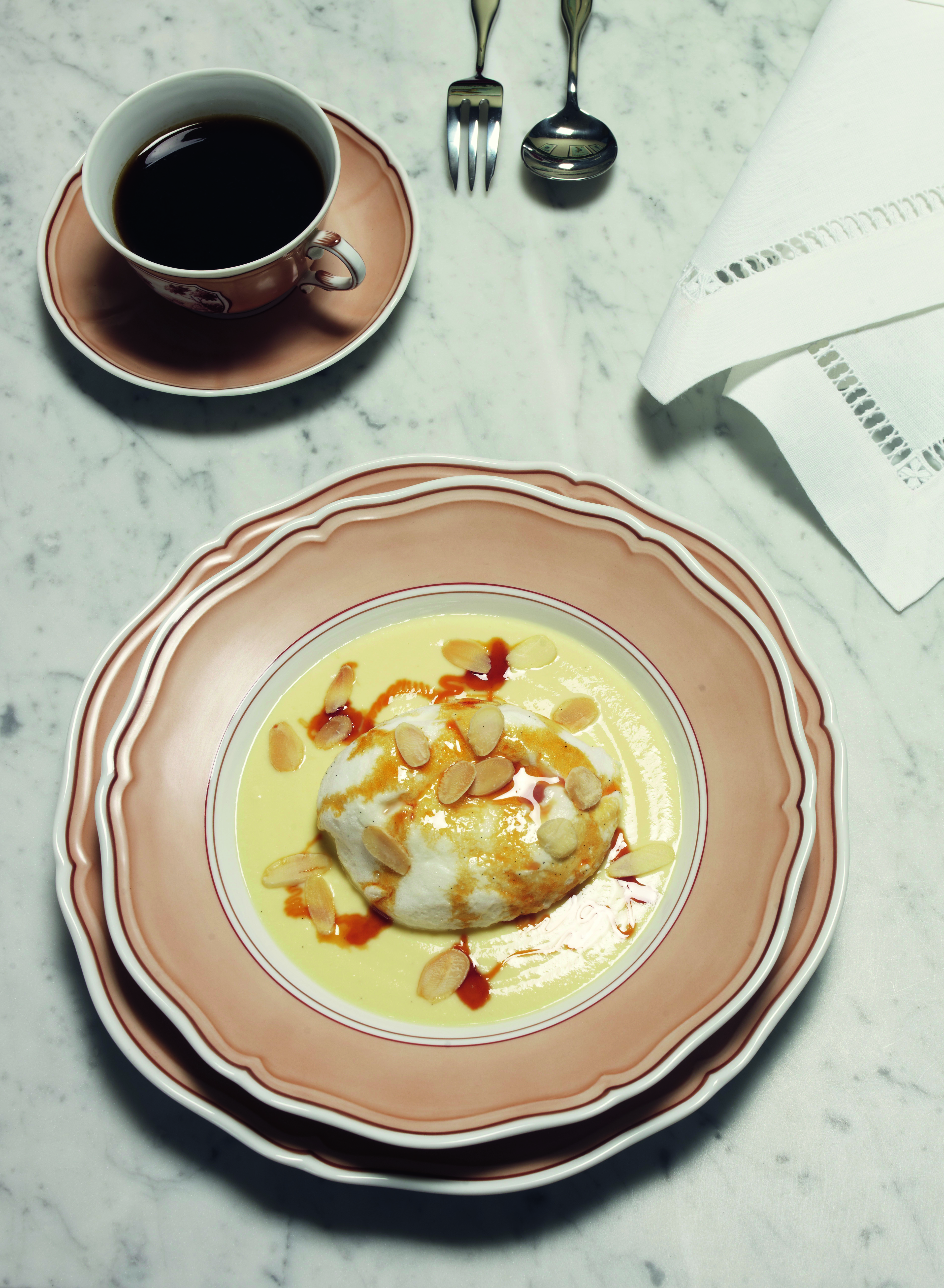
Top and above, from Wallpaper* May 2016. Entertaining Director: Melina Keays. Interiors: Benjamin Kempton
Floating islands recipe, serves 4
- 1 litre full-fat milk, plus a little extra
- 2 tsp vanilla bean paste
- 300g caster sugar
- 6 large eggs, separated
- 1 tsp lemon juice
- 1 tsp cornflour
- toasted flaked almonds
Put the milk, vanilla paste and 50g sugar into a large heavy-based saucepan and bring to the boil slowly over a low heat.
Meanwhile, put the egg whites and lemon juice in a large bowl and whisk into soft peaks. Add 120g sugar and whisk until stiff and glossy. Keep the milk simmering and drop large spoonfuls of meringue mixture into the milk. Poach gently for about 3 minutes, then turn and cook the other side for another 3 minutes. Leave them to drain on a clean cloth.
Strain the milk into a measuring jug, top up to the 1 litre level, pour back into the pan and return to simmering point. Place the yolks, cornflour and 30g of sugar in a large bowl and whisk until pale and fluffy. Slowly add the hot milk, stirring constantly. Pour back into the pan over a very low heat and stir until the custard is thick enough to coat the back of a spoon. Leave to cool, stirring occasionally.
To make the caramel, place the rest of the sugar and 3 tbs water in a pan over a low heat and leave to bubble gently until golden. Pour custard into a shallow bowl and float the meringues on the surface. Dribble over caramel, then chill. Scatter with almonds.
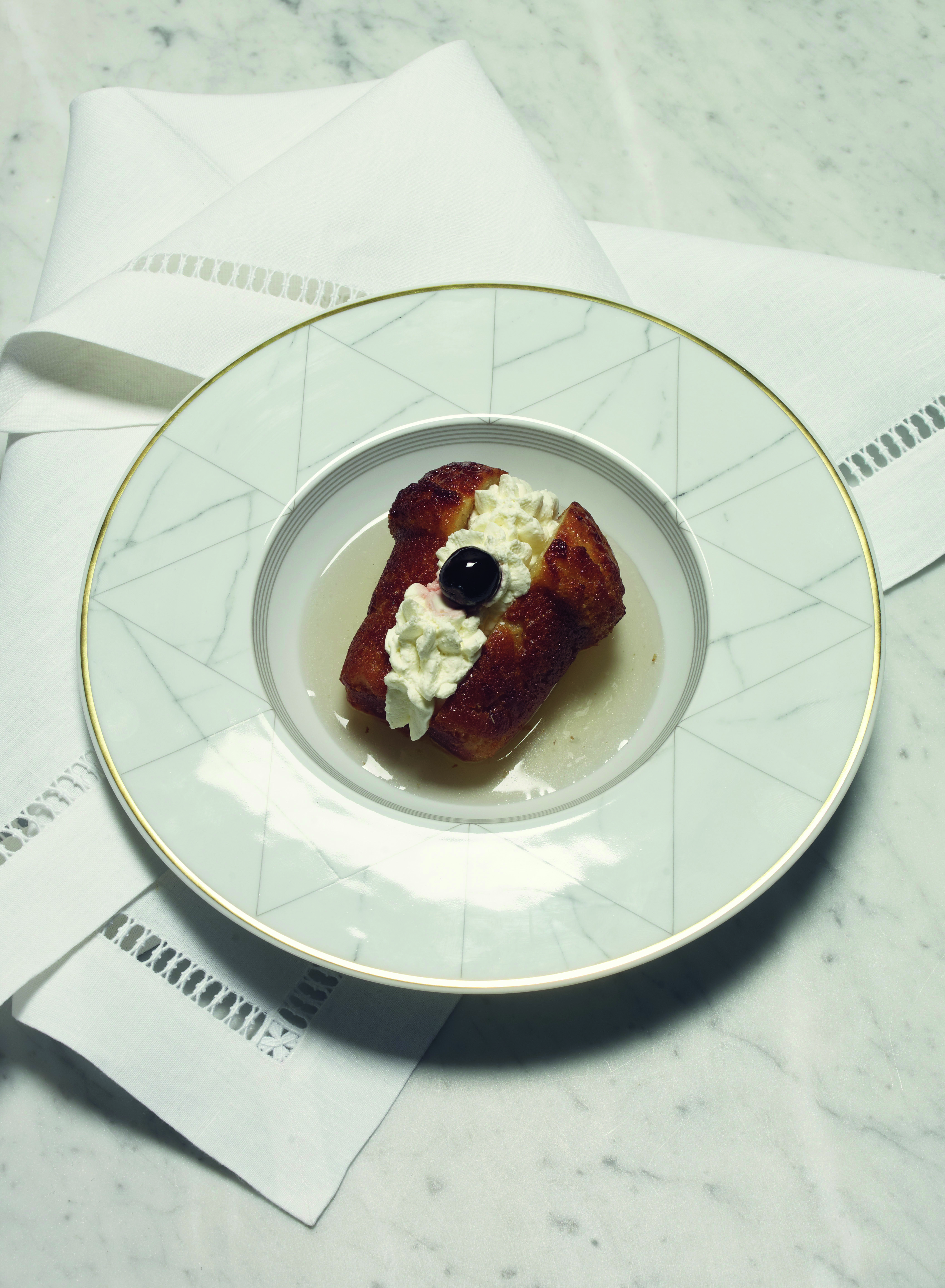
From Wallpaper* May 2016. Entertaining Director: Melina Keays. Interiors: Benjamin Kempton
Rum babas recipe, serves 6
- 250g plain flour
- 30g caster sugar, plus extra for the moulds
- 70ml milk
- 7g instant yeast
- 2 medium eggs, at room temperature, beaten
- 100g butter, softened
- 250ml double cream, whipped, to serve
For the syrup:
- 250g caster sugar
- 100ml dark rum
Put the flour, salt and sugar in a large bowl and stir well. Warm the milk, add the yeast and stir until dissolved. Add the eggs and milk mixture to the flour bowl and stir well, then knead on a floured surface for 10 minutes until smooth. Work in the butter, kneading for 5 minutes until you have a glossy, elastic dough. Place in a large bowl, cover with clingfilm and leave to rise for at least 1 hour until doubled in size.
Grease and sugar six 6cm tall dariole moulds. Turn out the dough and knead briefly to knock it back. Divide into six and place in the moulds. Heat the oven to 180°C.
Allow the babas to prove again until almost at the top of the moulds, then bake for 20 minutes until golden. Allow to cool slightly before carefully releasing from the moulds and placing on a wire rack.
To make the syrup, put the sugar, rum and 200ml water in a pan and bring to the boil. Simmer for 3 minutes, then remove from the heat and leave until just warm. Place the babas in a bowl, split in half and pour over the syrup. Serve with whipped cream.
Pithivier
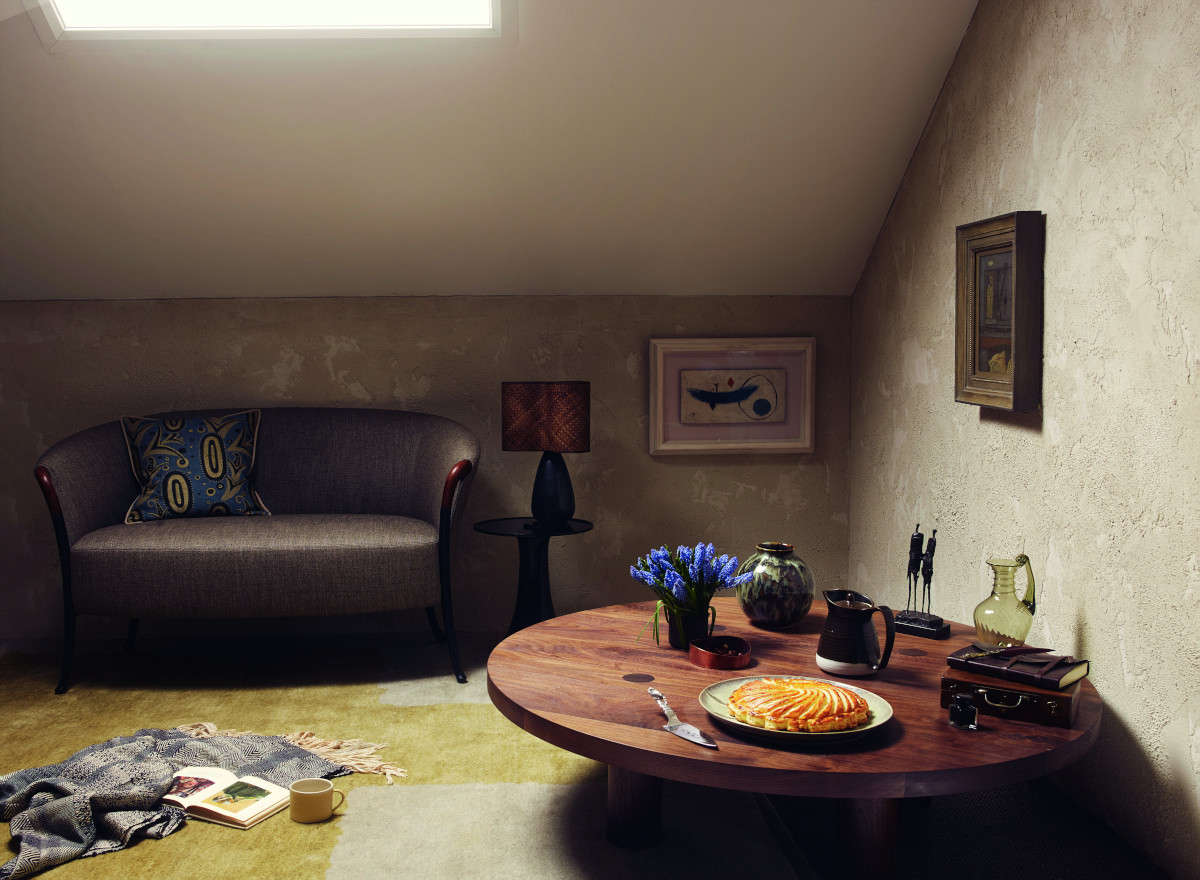
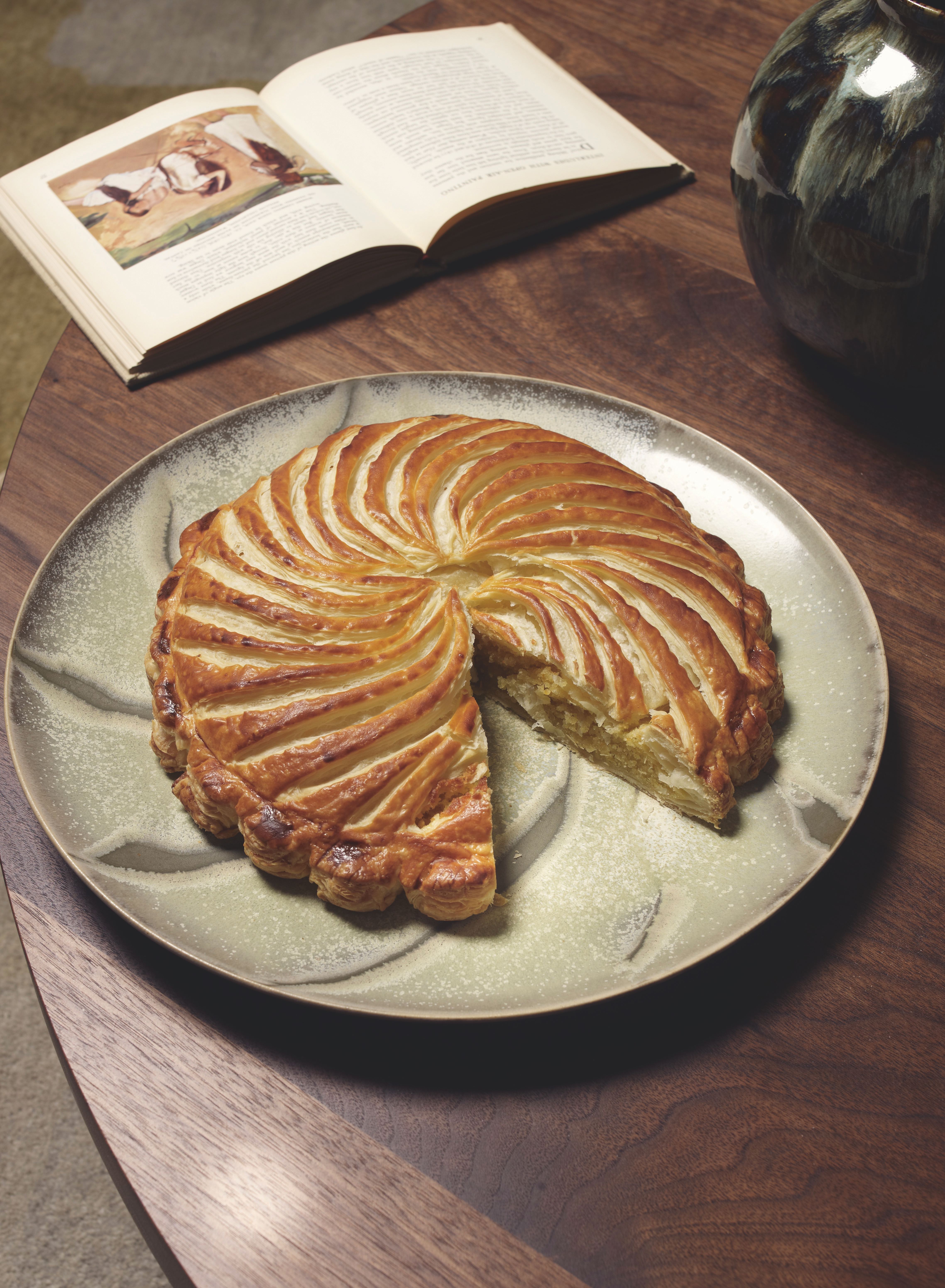
Top and above, from Wallpaper* May 2016. Entertaining Director: Melina Keays. Interiors: Benjamin Kempton
Pithivier recipe, serves 8
- 140g unsalted butter, softened
- 140g caster sugar
- 3 medium eggs
- 2 tbs dark rum
- grated zest of 1 orange
- 140g ground almonds
- 20g plain flour
- 1 tbs double cream
- 500g butter puff pastry
Place the butter and sugar in a bowl and beat until pale and fluffy. Beat in two of the eggs, one at a time, then the rum and zest. Fold in the almonds and flour.
In a clean bowl, beat the remaining egg with the cream to make an eggwash. Line a large baking sheet with baking paper. Cut the pastry into two pieces, one slightly larger than the other. Place the smaller piece on a lightly floured surface and roll into a circle about 28cm in diameter, then transfer to the baking sheet. Roll out the larger piece of pastry to the same diameter.
Spread the almond mixture onto the pastry on the baking sheet to within 3cm of the edge. Brush the exposed pastry with eggwash, place the second pastry circle on top and press the edges firmly together. Chill in the fridge for 30 minutes. Heat the oven to 200°C.
Take a flat plate, approximately 25cm in diameter, and centre it on top. With a small sharp knife, cut the exposed pastry to create a scalloped border. Glaze evenly with eggwash, then score the surface lightly with curving diagonal lines. Bake for 25-35 minutes until puffed and golden. Serve warm.
Bolos de arroz, and pastéis de nata
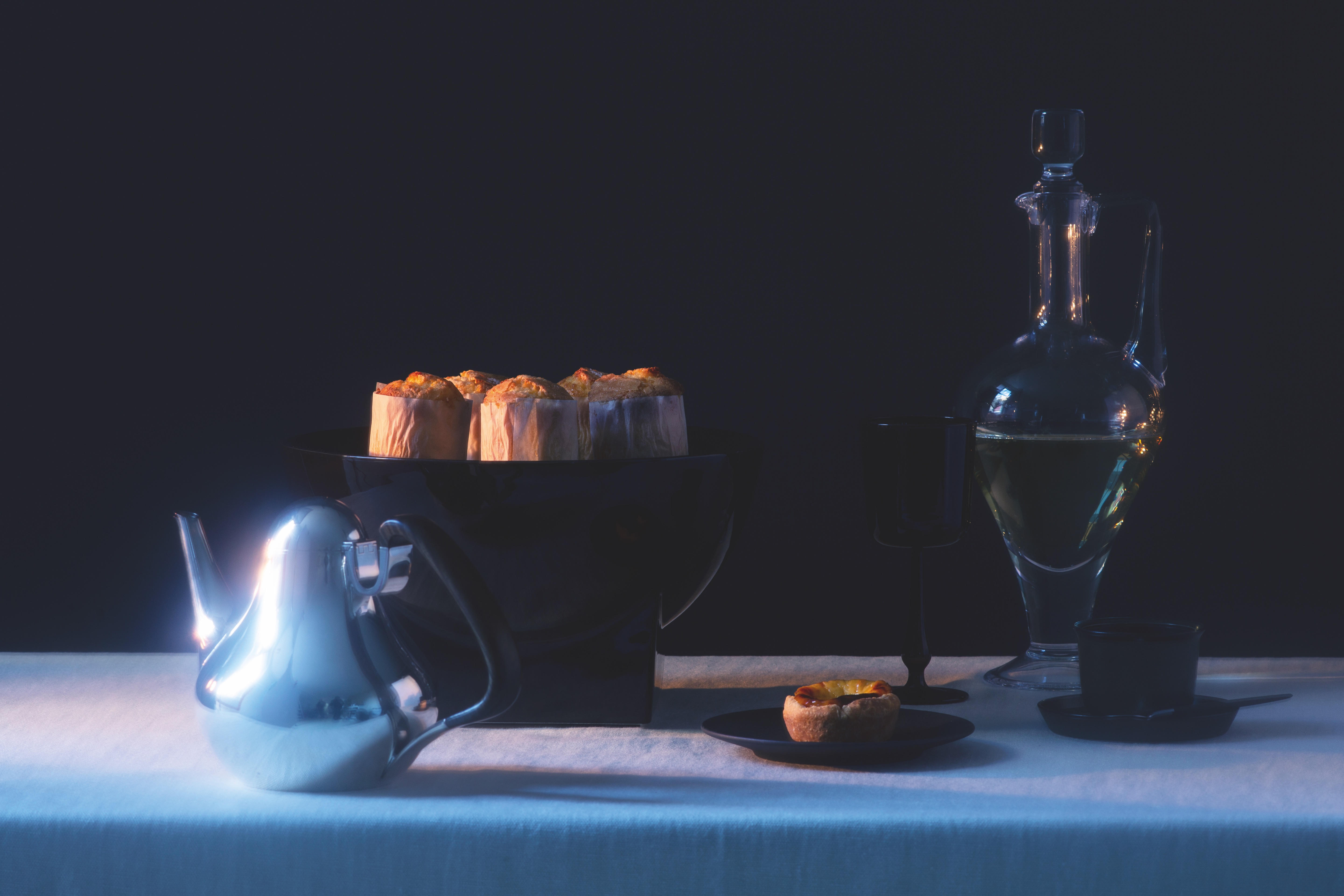
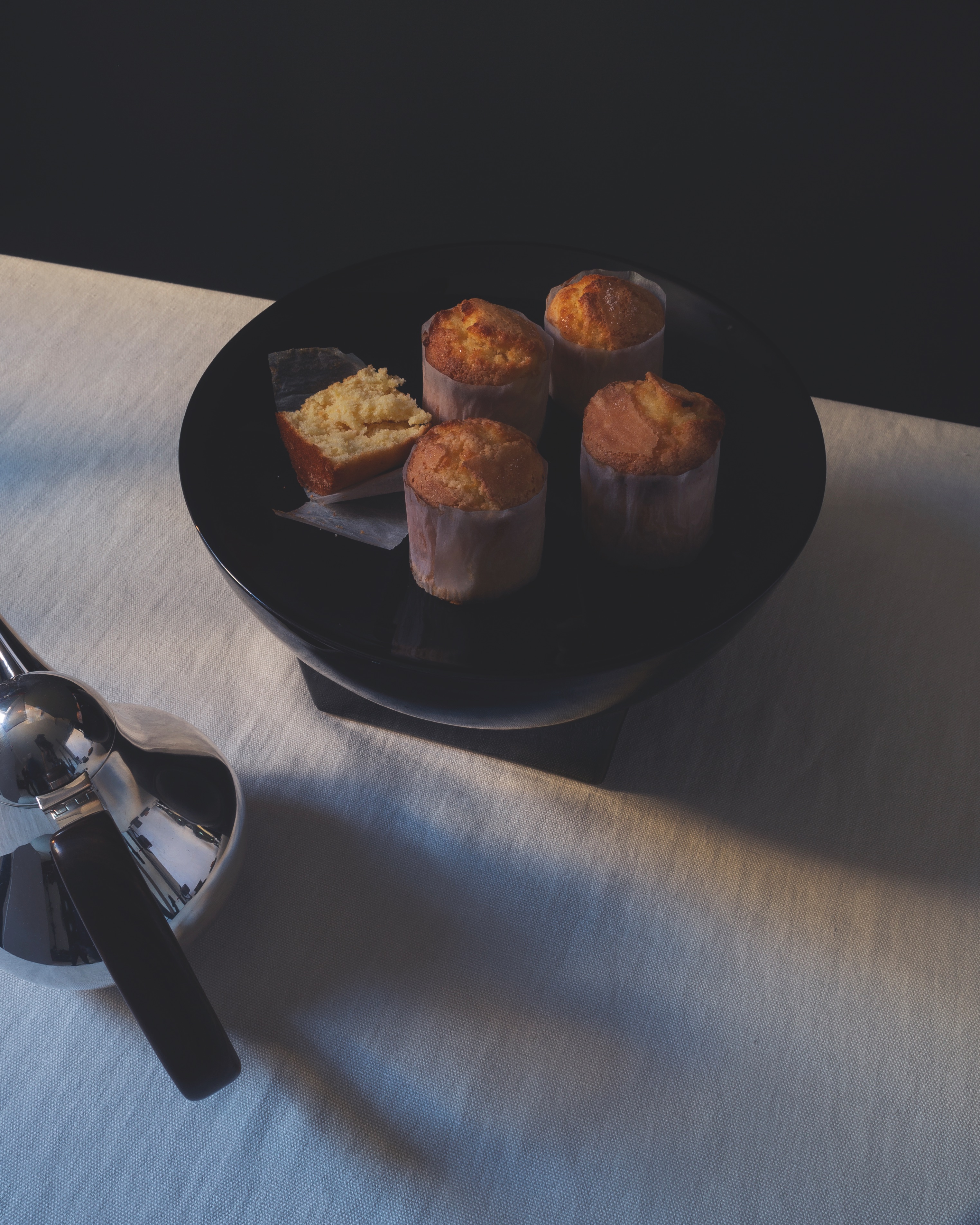
Top and above, from Wallpaper* December 2022. Entertaining Director Melina Keays. Interiors: Hannah Jordan
Bolos de arroz (rice cakes) recipe, makes 8
- 200g rice flour
- 60g plain wheat flour
- 1½ tsp baking powder
- ¼ tsp salt
- 100g butter, at room temperature
- 180g caster sugar
- 4 eggs
- juice and zest of 1 lemon
Grease eight cupcake tins and line the sides with 20cm x 5cm strips of baking paper. Heat the oven to 180°C.
Mix the flours, baking powder and salt and set aside. Beat the butter and sugar together until fluffy, then beat in the eggs one at a time. Stir in the lemon juice and zest, then the flour mix. Spoon the batter into the tins (about two-thirds up to the top of the paper edge) and sprinkle with more sugar. Bake for 25 minutes until well risen and golden. Cool on a wire rack.
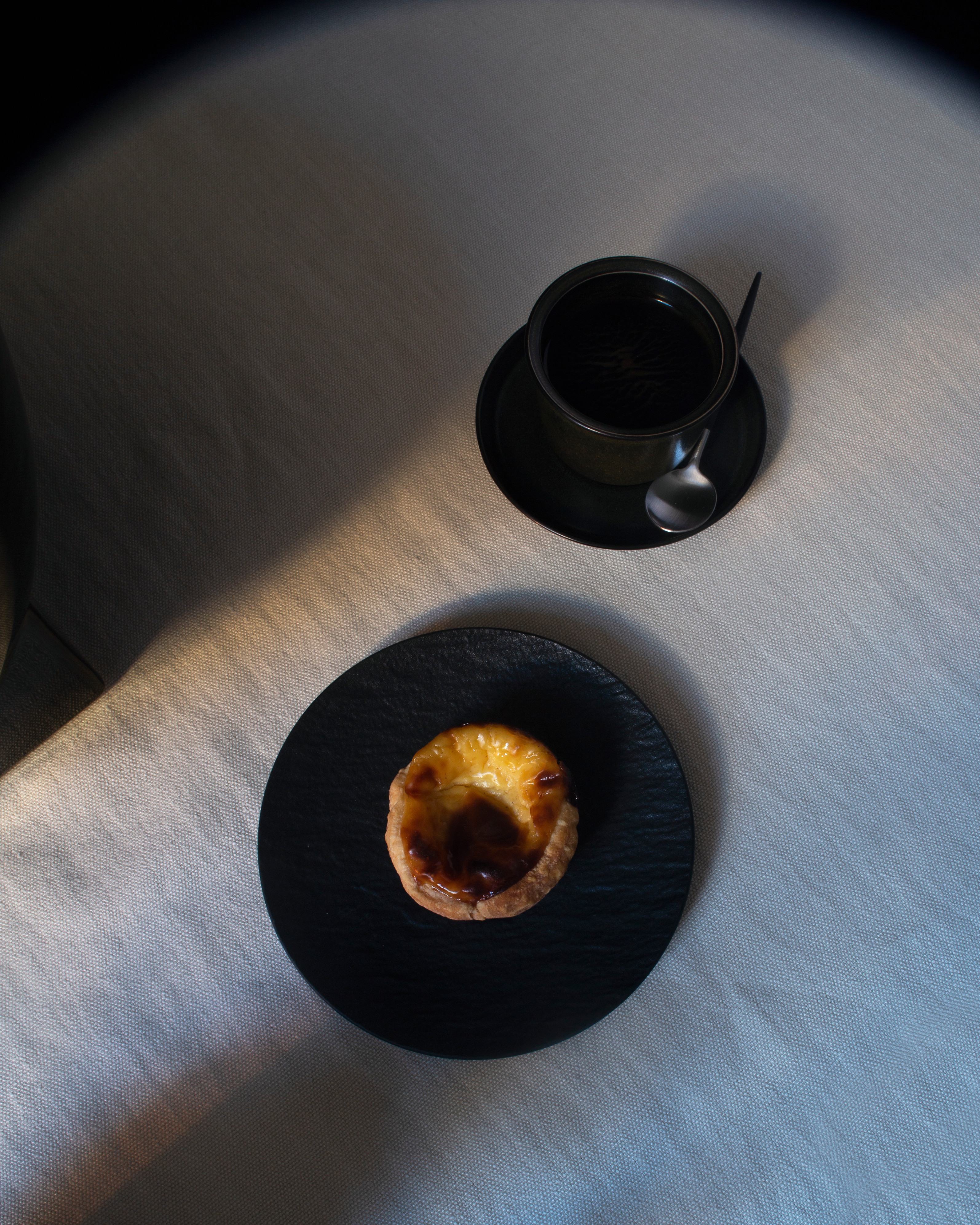
Pastéis de nata (custard tarts) recipe, makes 12
- 4 egg yolks
- 110g white sugar
- 2 tbs cornflour
- 100ml single cream
- 300ml milk
- 1 cinnamon stick
- 1 long strip lemon zest, taken from an unwaxed lemon with a peeler
- 1 tsp vanilla extract
- 250g puff pastry
Place the yolks, sugar, cornflour, cream and milk in a heavy-bottomed pan and whisk to combine. Add the cinnamon and lemon zest and place over a low to medium heat. Bring the mixture slowly to a boil, stirring constantly with a wooden spoon until you have a smooth thick custard.
Remove from the heat, stir in the vanilla and allow to cool, stirring occasionally. When cold, remove the cinnamon and lemon zest.
Roll out the pastry to an approximate 15cm x 30cm rectangle. Roll this rectangle tightly into a cigar from the short end. Cut the cigar into 12 pieces. Flatten each round with the palm of your hand and then roll out thinly to a diameter of approximately 10cm. Line a 12-cup muffin tin with the rolled-out spirals.
Preheat the oven to 200°C. Spoon the custard into the pastry shells and bake for 20-25 minutes until puffed and golden.
Spiral biscuits
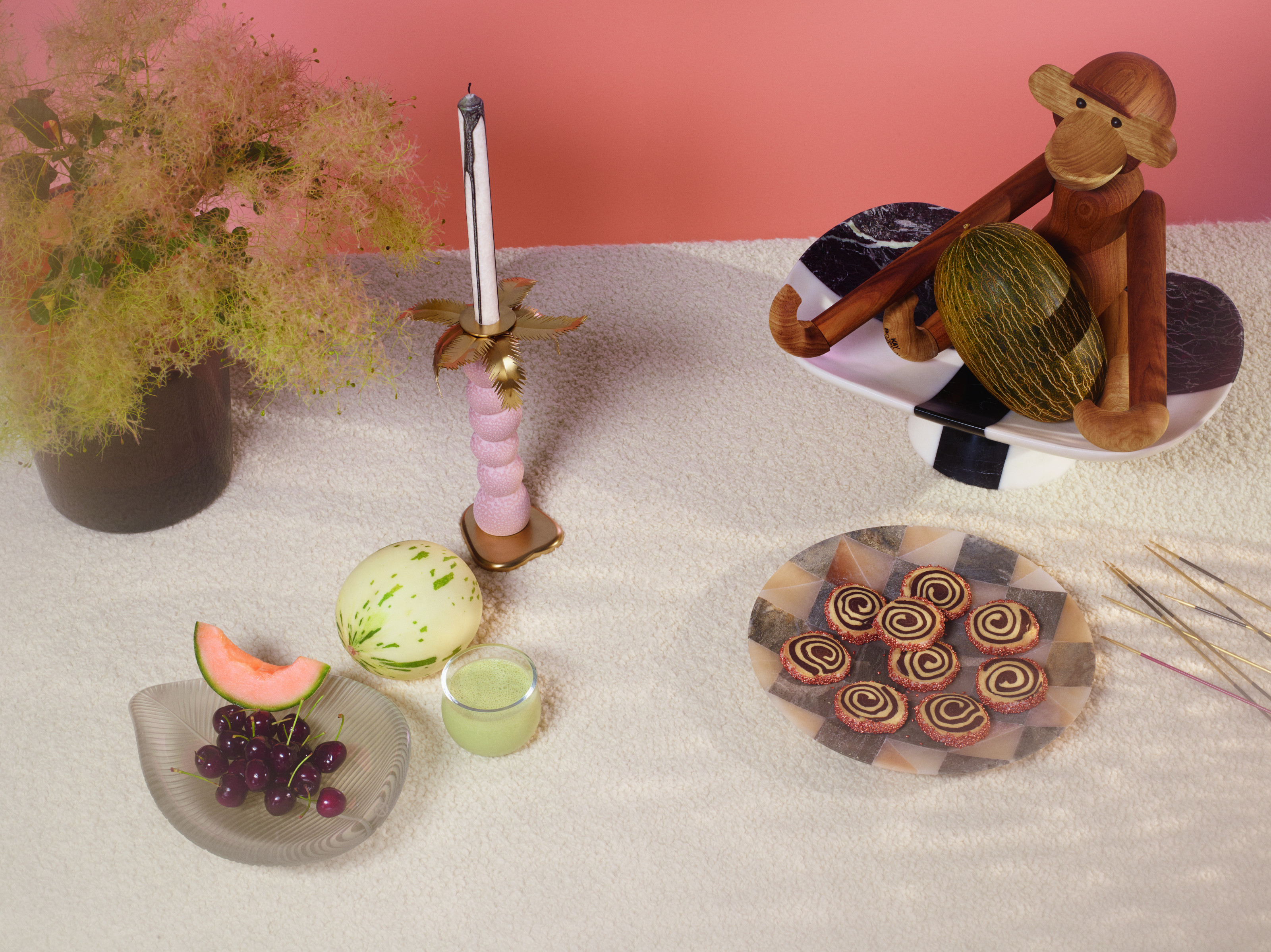
From Wallpaper* October 2019. Entertaining Director: Melina Keays. Interiors: Olly Mason
Spiral biscuits recipe, makes 18
- 170g plain flour, plus 40g
- ¼ tsp salt
- 150g cold unsalted butter, cut into chunks
- 100g caster sugar
- 1 egg
- 1 tsp vanilla paste
- 40g cocoa powder
- 50g icing sugar
- 1 tbs lemon juice
- hundreds and thousands
Put the 170g of flour, salt and butter into the bowl of a food processor and pulse to the texture of fine breadcrumbs. Add the sugar, egg and vanilla paste and process until the dough comes together.
There will be approximately 480g of dough. Remove half (approximately 240g) from the processor and set aside. Add the remaining 40g of flour to the half that remains in the processor and pulse until the dough comes together. Remove and wrap in clingfilm.
Place the reserved dough and the cocoa powder in the food processor and pulse to a smooth dough. Wrap in clingfilm and place both doughs in the fridge to firm up for 30 minutes.
Roll the plain dough out on a lightly floured surface until it’s about 25cm long and 20cm wide. Do the same with the chocolate dough, then lay one on top of the other. Lightly roll the surface once or twice with the rolling pin just to press them together. Straighten the edges, and carefully roll up the rectangle from one of the short edges to make a tight spiral. Wrap in clingfilm and chill for at least 1 hour or overnight.
Heat the oven to 170°C. Line two trays with baking paper. Remove the chilled dough from the fridge and cut neatly into 18-20 slices. Place these on the baking trays, spaced about 3cm apart. Place in the hot oven for 18-20 minutes until only just beginning to turn golden. Remove from the oven and place on wire racks to cool.
Mix the icing sugar with enough of the lemon juice to make a loose paste. Pour the hundreds and thousands into a shallow bowl. Spread icing onto the edges of the biscuits, dip into the hundreds and thousands, and leave to set.
Melina Keays is the entertaining director of Wallpaper*. She has been part of the brand since the magazine’s launch in 1996, and is responsible for entertaining content across the print and digital platforms, and for Wallpaper’s creative agency Bespoke. A native Londoner, Melina takes inspiration from the whole spectrum of art and design – including film, literature, and fashion. Her work for the brand involves curating content, writing, and creative direction – conceiving luxury interior landscapes with a focus on food, drinks, and entertaining in all its forms
-
 How Charles and Ray Eames combined problem solving with humour and playfulness to create some of the most enduring furniture designs of modern times
How Charles and Ray Eames combined problem solving with humour and playfulness to create some of the most enduring furniture designs of modern timesEverything you need to know about Charles and Ray Eames, the American design giants who revolutionised the concept of design for everyday life with humour and integrity
-
 Why are the most memorable watch designers increasingly from outside the industry?
Why are the most memorable watch designers increasingly from outside the industry?Many of the most striking and influential watches of the 21st century have been designed by those outside of the industry’s mainstream. Is it only through the hiring of external designers that watch aesthetics really move on?
-
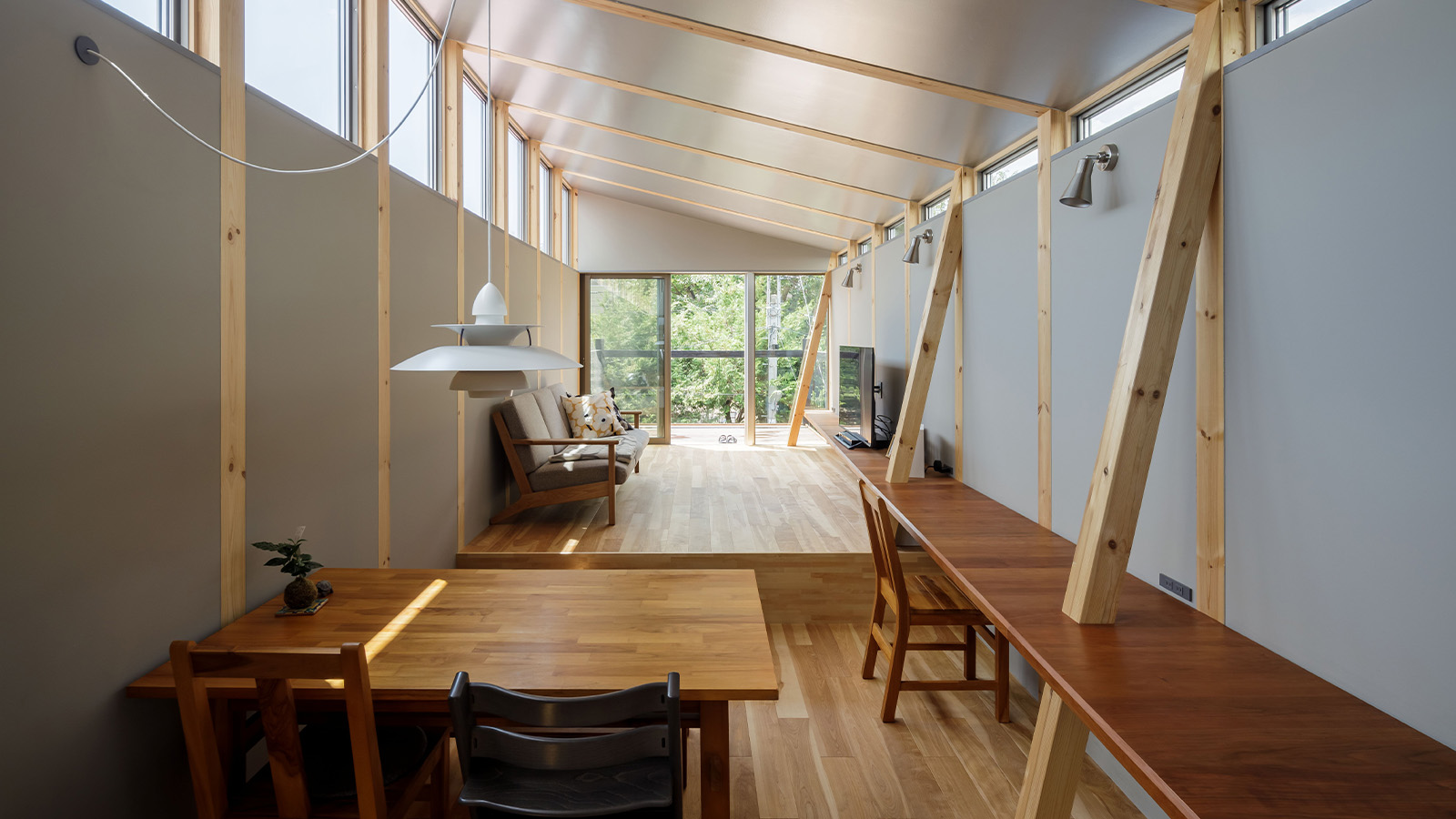 This Fukasawa house is a contemporary take on the traditional wooden architecture of Japan
This Fukasawa house is a contemporary take on the traditional wooden architecture of JapanDesigned by MIDW, a house nestled in the south-west Tokyo district features contrasting spaces united by the calming rhythm of structural timber beams